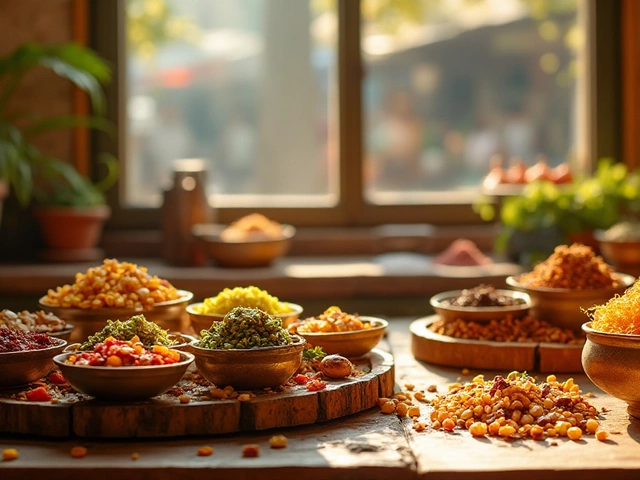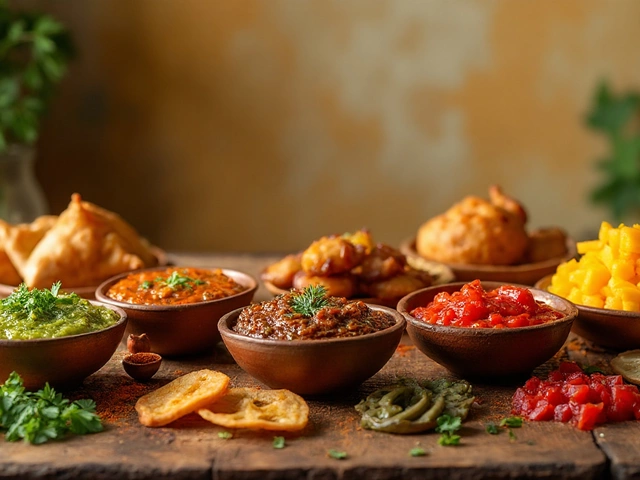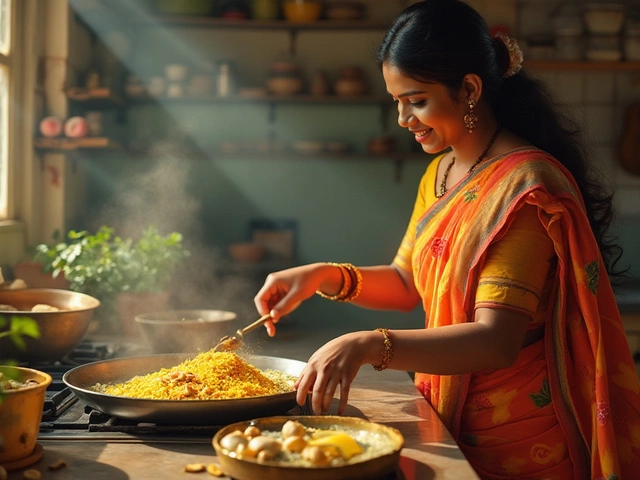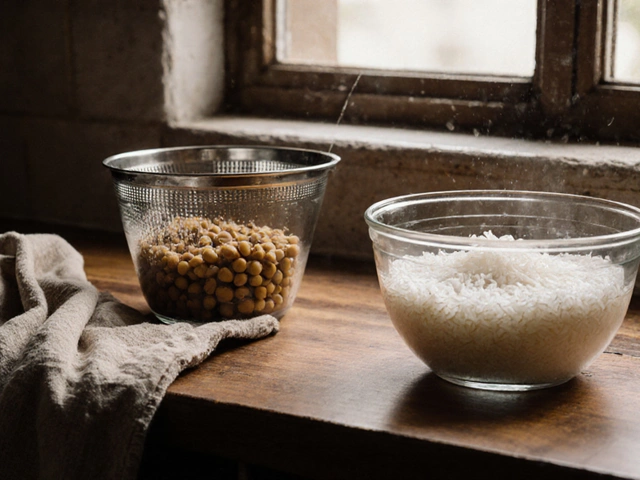So, you've heard 'Tata' and thought it was just an endearing term? Well, in India, as you're munching on some delectable street food, 'Tata' might also be the name of that friendly uncle serving up a family recipe that's been passed down for generations. In various cultures, it means 'daddy,' but here it's all about connecting food, family, and community.
India's street food scene is nothing short of a sensory explosion. If you're diving into this world, you'll find there's always something sizzling in every nook and cranny, from Mumbai's vada pav to Delhi's chaat. Each local specialty has its own story and is often as unique as the people preparing them.
- The Meaning Behind 'Tata'
- Iconic Street Foods to Try
- Tips for Navigating India's Street Food
- Safety Measures for a Healthy Experience
The Meaning Behind 'Tata'
You might think 'Tata' is just an affectionate nickname for 'daddy' in a couple of languages, but in the world of Indian street food, it can mean so much more. In India, businesses, including those on bustling street corners, are often family-run, passing down not just recipes but traditions across generations. The name 'Tata' isn't uncommon for these family patriarchs who are at the heart of their food stalls.
The beauty of Indian cuisine is that it's deeply intertwined with culture and family history. Every family has its unique spin on a traditional dish, leading to delightful and sometimes surprising variations in taste. When a family elder, perhaps affectionately called Tata, is in charge, you’re not just getting food; you're getting a slice of familial warmth and generations of culinary wisdom.
The Cultural Significance
Beyond just a name, having an elder like Tata involved symbolizes respect and learning from past generations. This practice is prevalent, especially when it comes to perfecting masala blends or fermenting batter for dosas just right. These processes require a seasoned hand, often that of Tata, who've been watching and learning from their elders since they were young.
Across India, these family-run street stalls are not just businesses but integral cultural sites where culinary traditions thrive and evolve. They provide a sense of continuity and community, making street food not just about taste but about preserving cultural identity.
Iconic Street Foods to Try
In India, exploring the vast variety of street food is nothing short of an adventure for the taste buds. Whether you're a first-time visitor or a seasoned traveler, these must-try delights should definitely be on your list.
Vada Pav in Mumbai
Often called the Indian burger, the Vada Pav is a spicy potato filling stuffed between a bun. Perfectly flavored and crispy, it's a staple in Mumbai. Pair it with a cup of sweet chai for the true local experience.
Chaat in Delhi
Delhi is known for its chaat—a savory snack that's a riot of flavors and textures. Try the papdi chaat, which combines crunchy wafers with boiled potatoes, a splash of tamarind chutney, and a sprinkle of chaat masala.
Pani Puri Across India
No street food exploration is complete without Pani Puri, known as golgappa in the north. These crispy shells are filled with spicy water, tamarind, and chickpeas, offering a burst of flavor in every bite.
Idli Sambhar in South India
For a hearty and healthy option, the steamed rice cakes known as idlis served with spicy sambhar are perfect. These are typical breakfast items in the southern parts of India and are both filling and delicious.
Biryani in Hyderabad
Hyderabad's biryani is world-famous. This fragrant rice dish, cooked with meat or vegetables, and seasoned with a unique blend of spices, is a must-have for anyone visiting the city.
If you're a fan of stats, here's a small glimpse into the variety:
| City | Popular Street Food |
|---|---|
| Mumbai | Vada Pav |
| Delhi | Chaat |
| Hyderabad | Biryani |
| South India | Idli Sambhar |
So, the next time you're in India, make sure to introduce your taste buds to these incredible street foods. It’s a culinary adventure you won't forget!
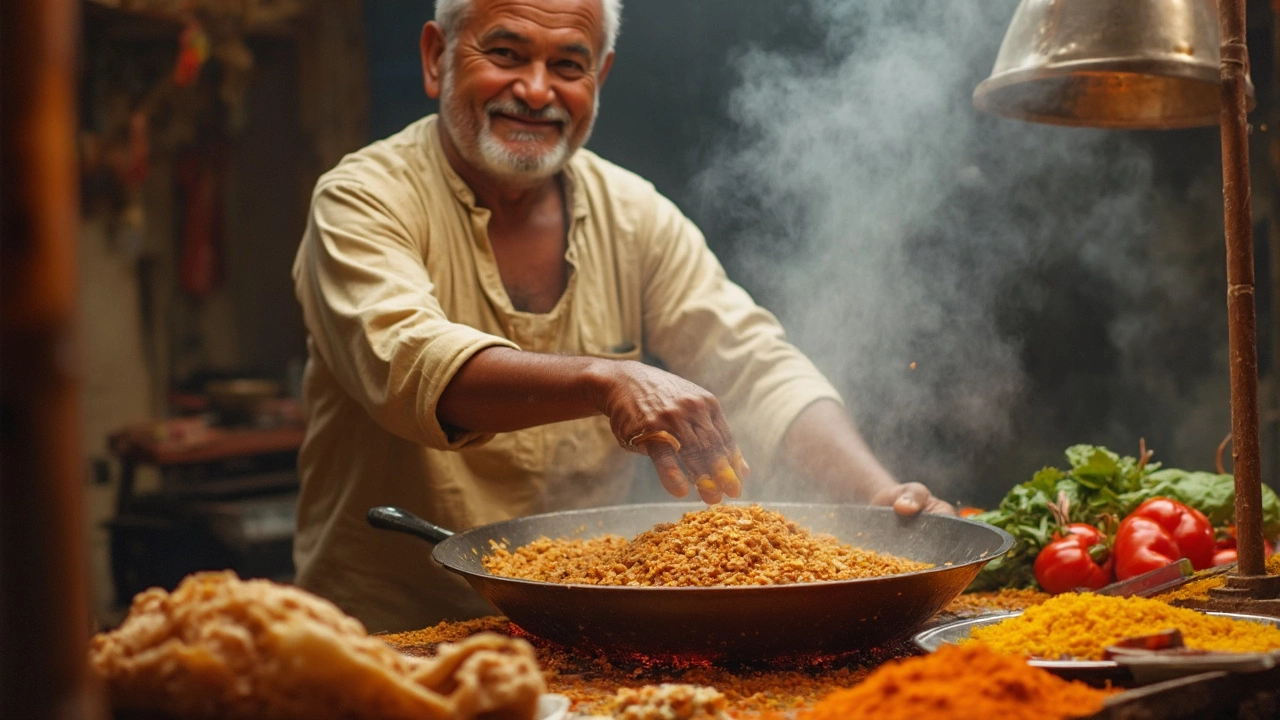
Tips for Navigating India's Street Food
Exploring India's street food is like embarking on a thrilling adventure, but it can be a bit overwhelming if you're not prepared. To make the most of it, you need a few solid tips. Here's how to enjoy the vibrant street food scene like a seasoned local.
Do Your Research
Before heading out, it's a smart idea to research the popular street foods and their respective cities. For instance, if you're in Mumbai, trying the vada pav is a must. In Delhi, don't miss out on the spicy chaat. Know what's iconic in each place and start with those.
Look for Busy Stalls
A simple rule of thumb for finding the best and safest street food is to follow the crowd. Local folks know where the good stuff is, and busy stalls mean the food is fresh and high-turnover.
Observe Hygiene Practices
While street food is oh-so-tasty, you gotta be cautious about hygiene. Look for vendors with gloves, those who use clean utensils, and where the food isn't left sitting out too long.
Start Small
- Choose a stall that isn't too intimidating.
- Grab an easy-to-eat street snack. Paani puri, anyone?
- On the first try, go for flavors that you know you'll enjoy to ease into the adventure.
Be Adventurous but Cautious
Sure, trying something new is part of the fun, but listen to your gut. If something looks or smells off, skip it. There's so much out there that you won't miss out by skipping one questionable dish.
Carry Cash
Many street vendors prefer cash. ATMs are not always nearby on bustling food streets, so keep some local currency handy.
| Popular Street Food City | Iconic Dish |
|---|---|
| Mumbai | Vada Pav |
| Delhi | Chaat |
| Kolkata | Kathi Roll |
| Ahmedabad | Dhokla |
Being equipped with these tips will make your street food journey delightful and memorable. It's all about savoring the authentic flavors of India while ensuring you have a pleasant experience.
Safety Measures for a Healthy Experience
India's street food scene can be a mouthwatering adventure, but keeping health in check is crucial. Let's explore some practical steps to enjoy this culinary journey without any hiccups.
Choose Busy Vendors
Mingle with the locals and see where the crowd goes. Busy vendors often mean higher food turnover, which usually equates to fresher ingredients. It's like a universal foodie truth: busy is usually better when it comes to street eats!
Mind the Water
Stay cautious about the water source. Avoid ice and fresh fruit juices unless you're sure that the water used is safe. Opting for bottled water is a safer bet to keep your stomach happy.
Spot the Cleanliness
Visual checks never hurt. Look for vendors that maintain a clean setup. Food handlers with gloves, hair tied back, and utensils resting in hot water are good signs of hygiene.
Stick to Cooked Foods
It's tempting to try everything, but sticking to cooked foods can be a safer option. Foods cooked on the spot, like sizzling kebabs or freshly fried samosas, are less likely to carry germs.
Carry Hand Sanitizer
Always have a hand sanitizer packed. Before diving into that tasty vada pav, a quick sanitize can be a game-changer, especially when soap and water aren't around.
Listen to Your Gut
Sometimes, it's about trusting your instincts. If something feels off, it might be best to give it a miss and find another street food vendor. Your senses are your first line of defense!
Following these tips not only ensures a tasty food experience but also keeps your health in check. With these handy measures, exploring the street food India offers is an exciting yet safe adventure!
- Poplular Tags
- street food India
- Tata
- India cuisine
- foodie travel







